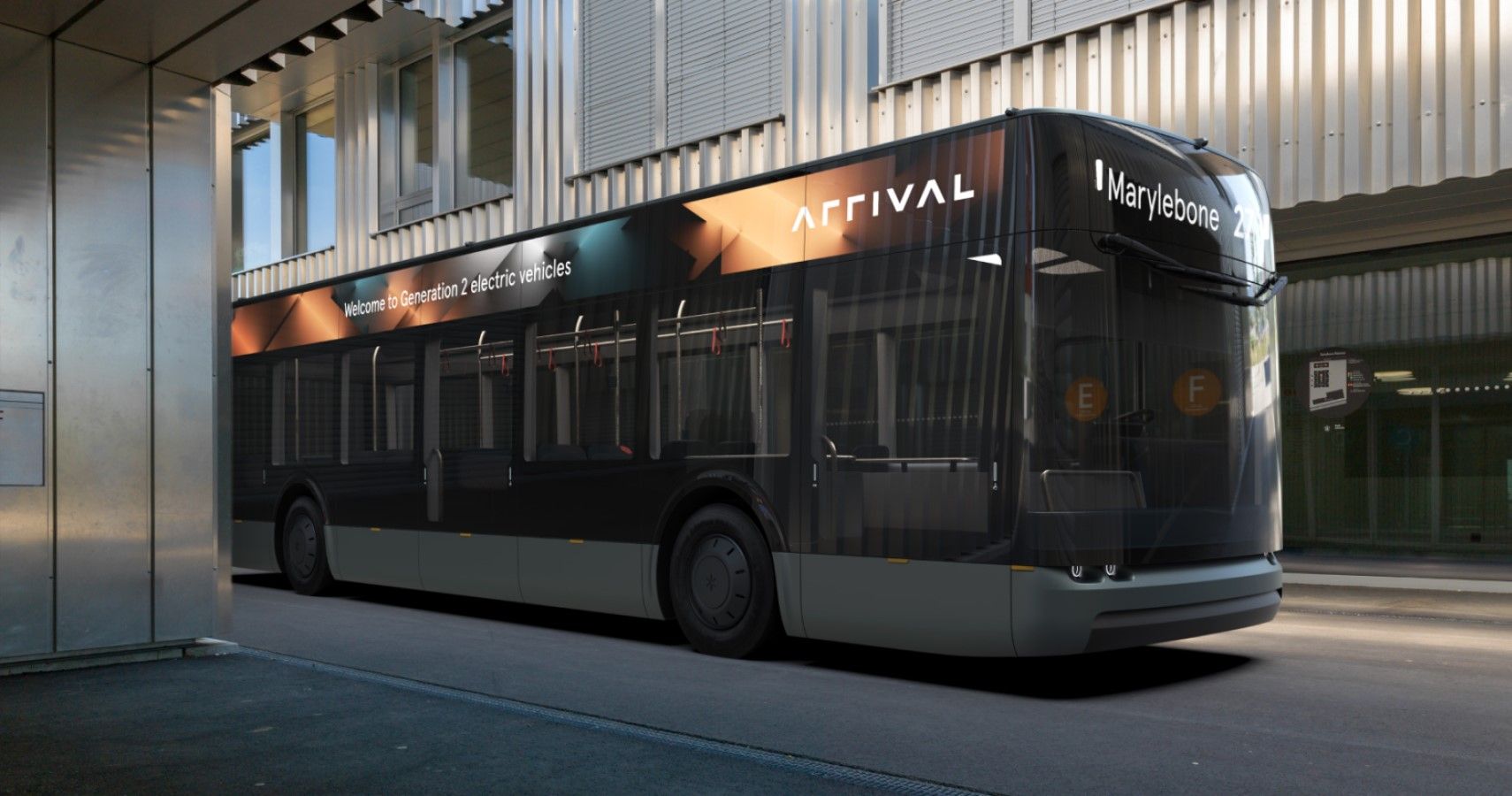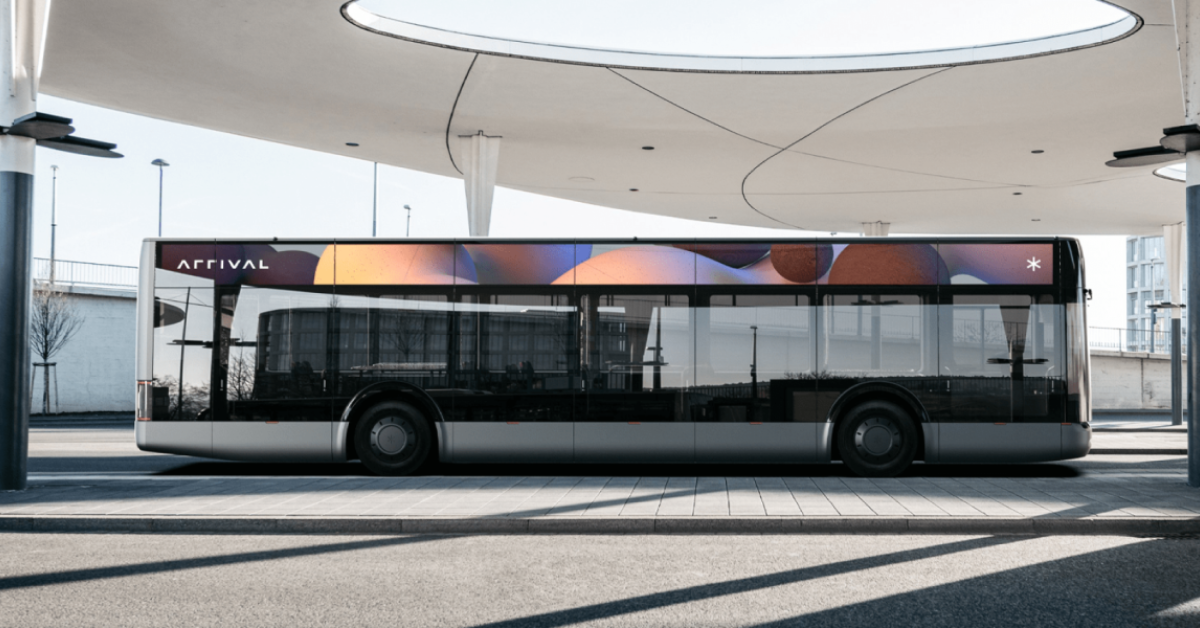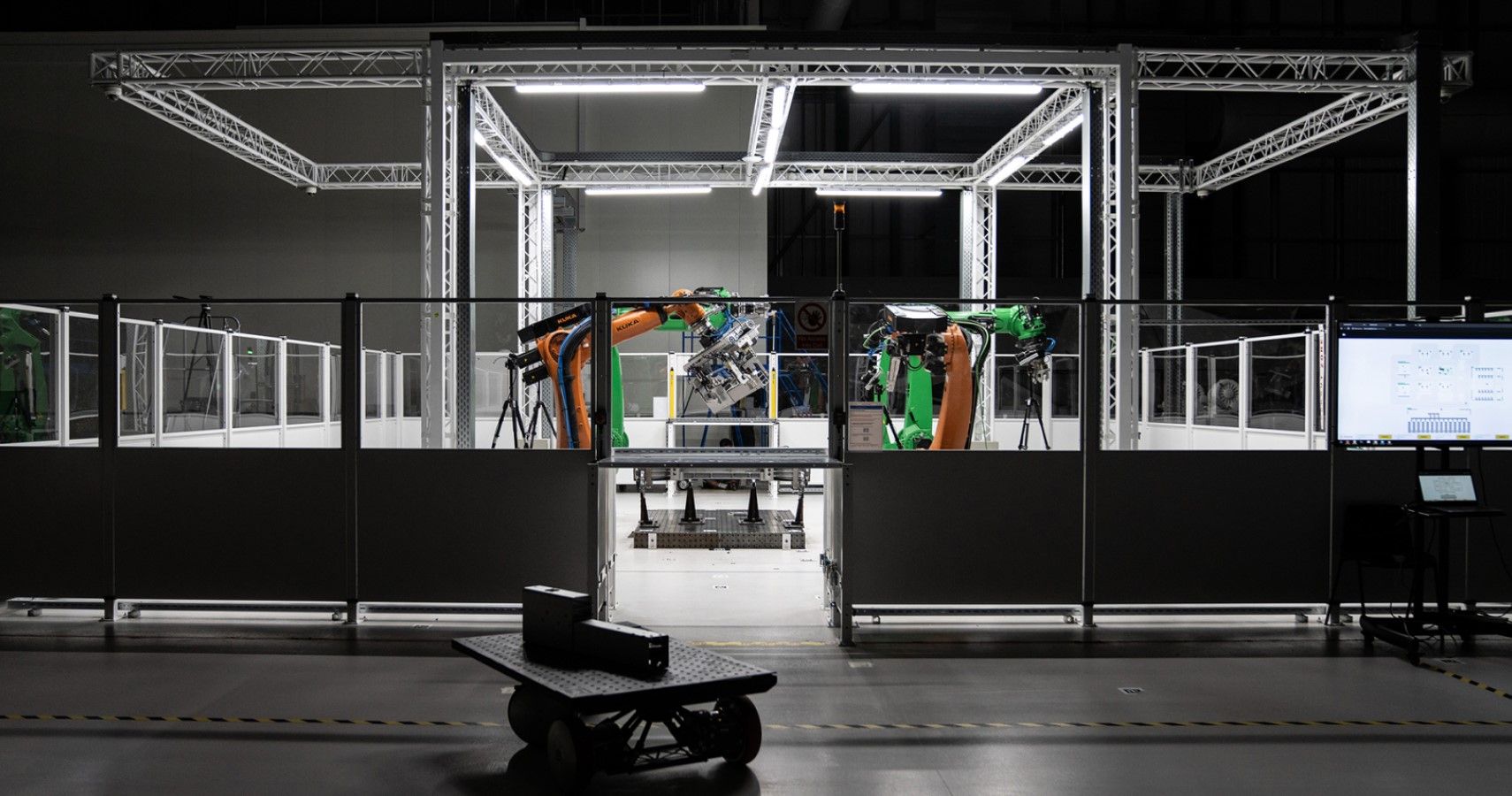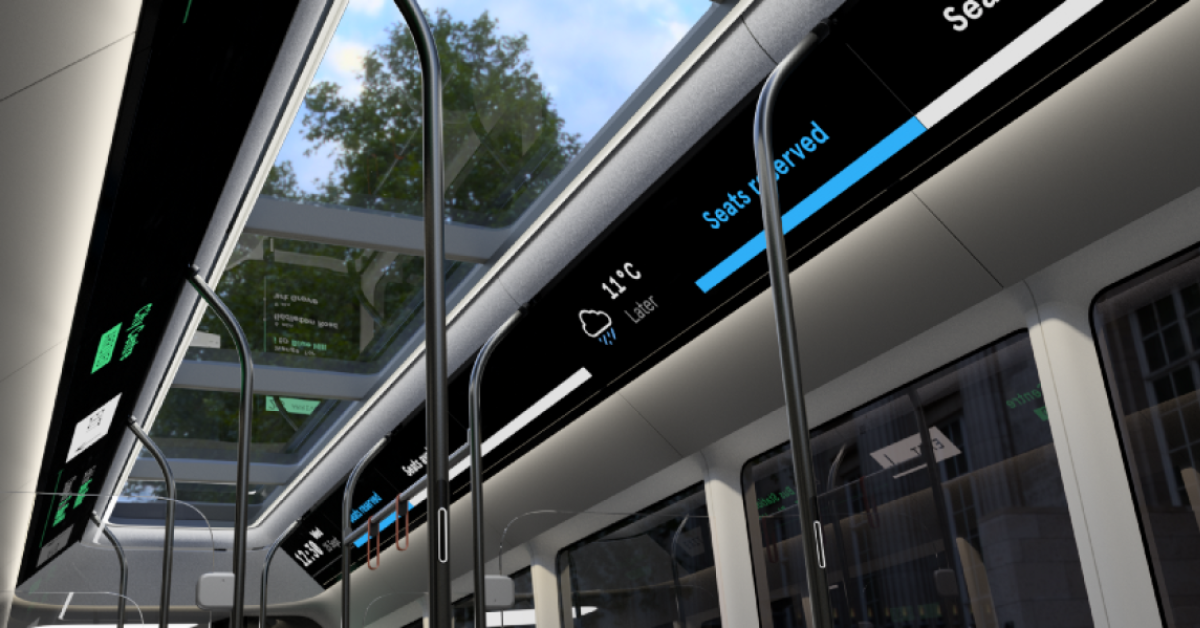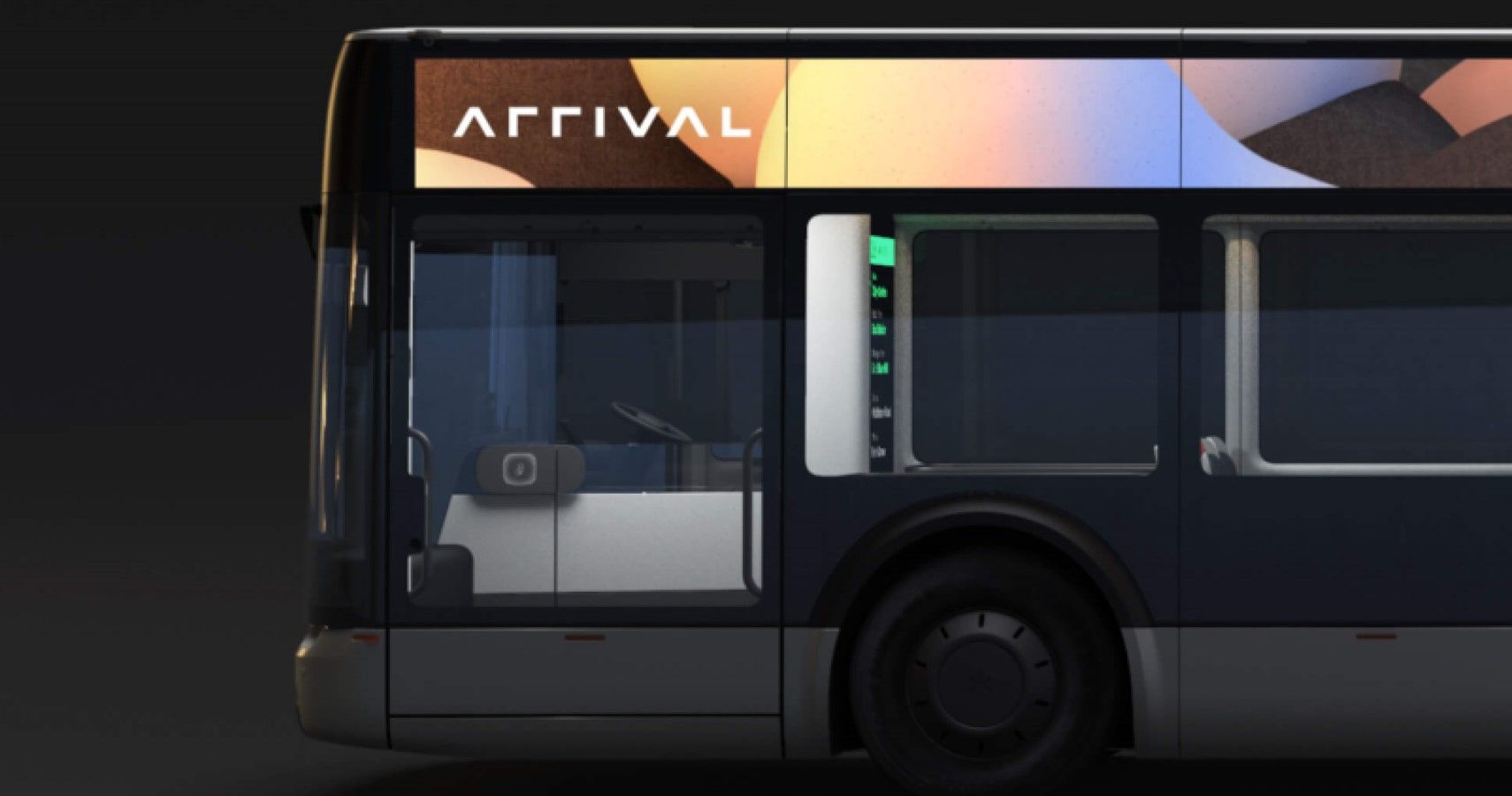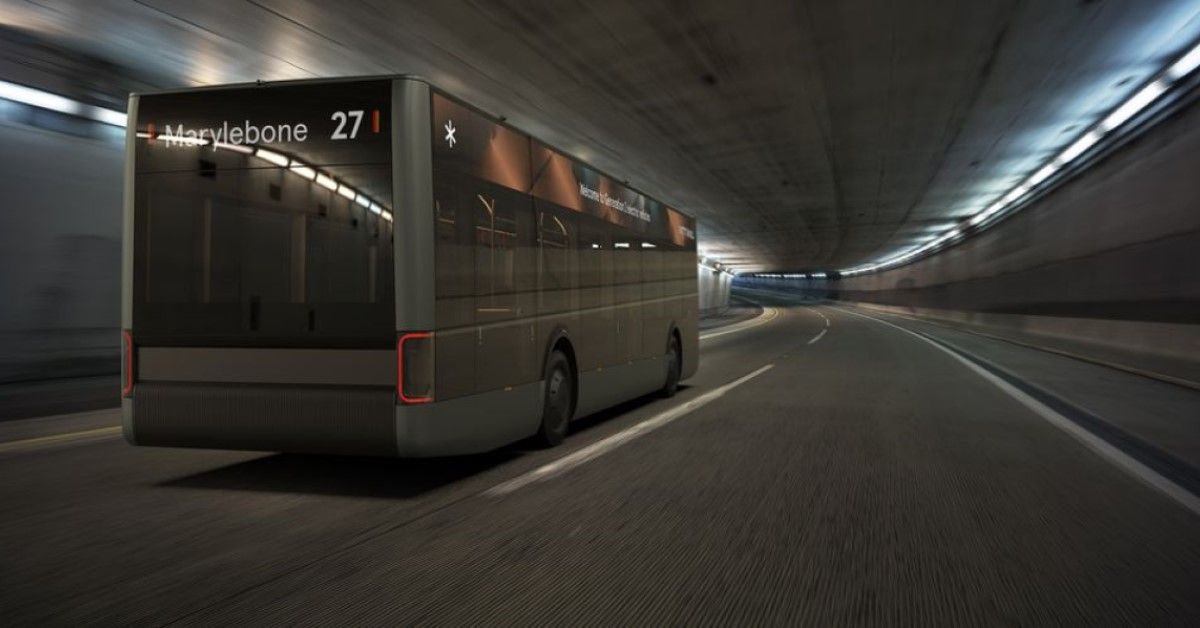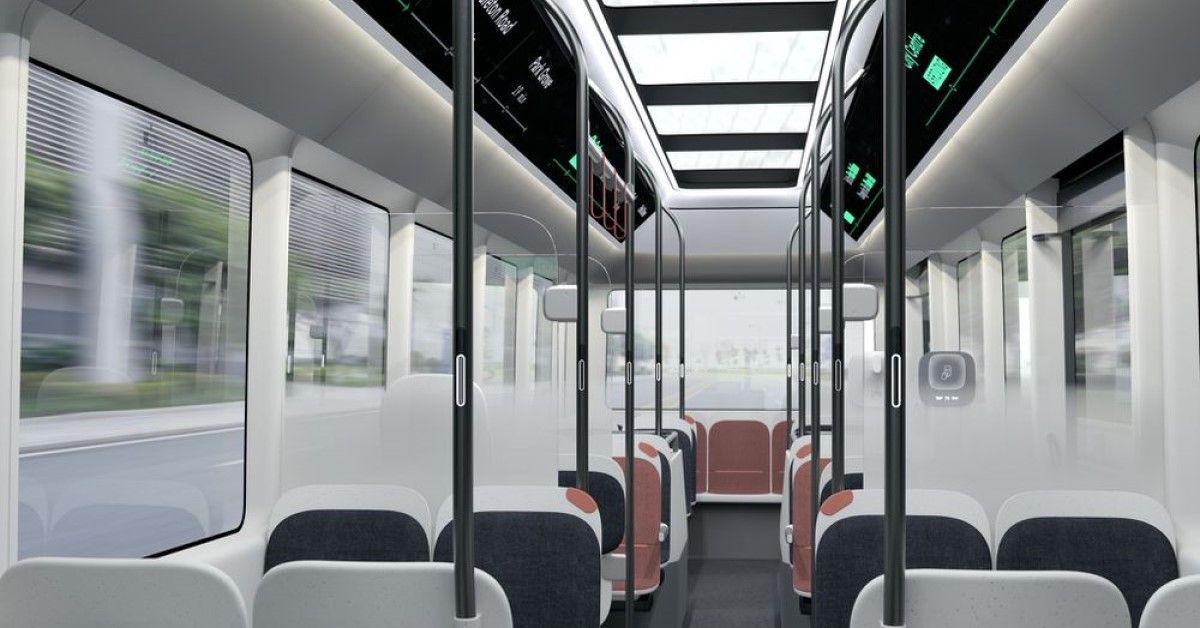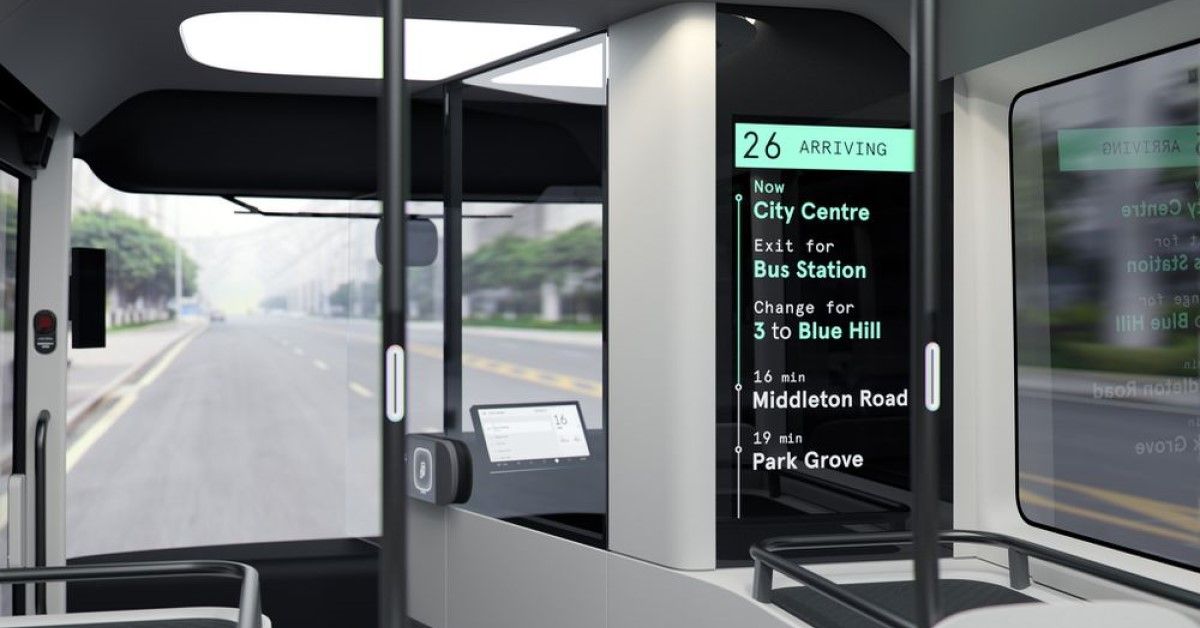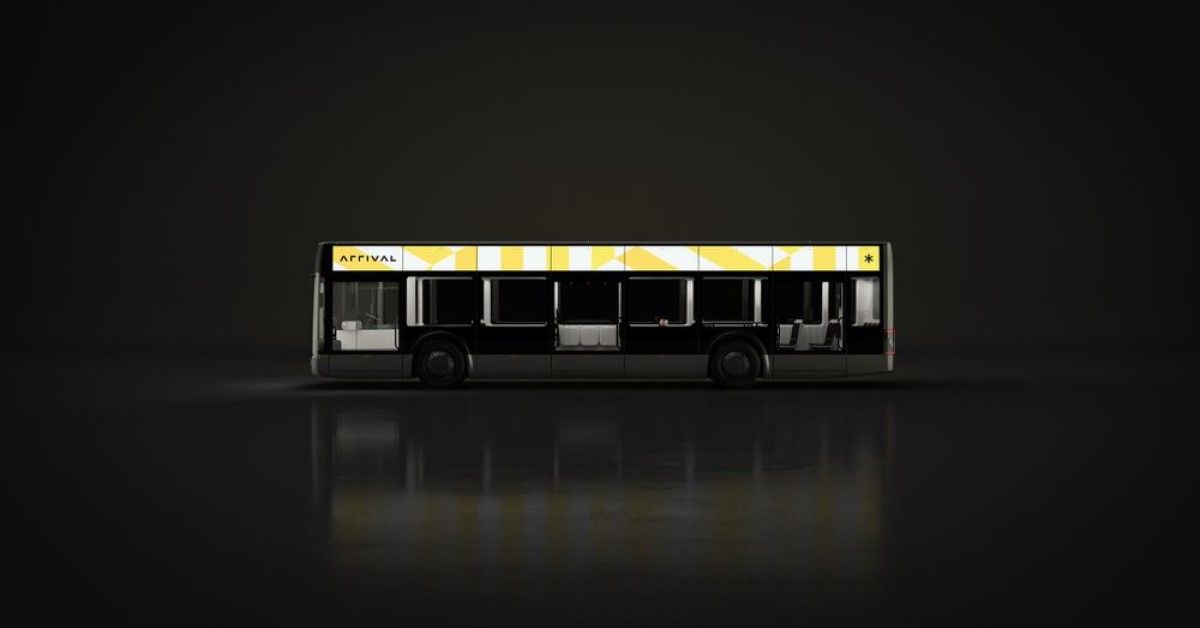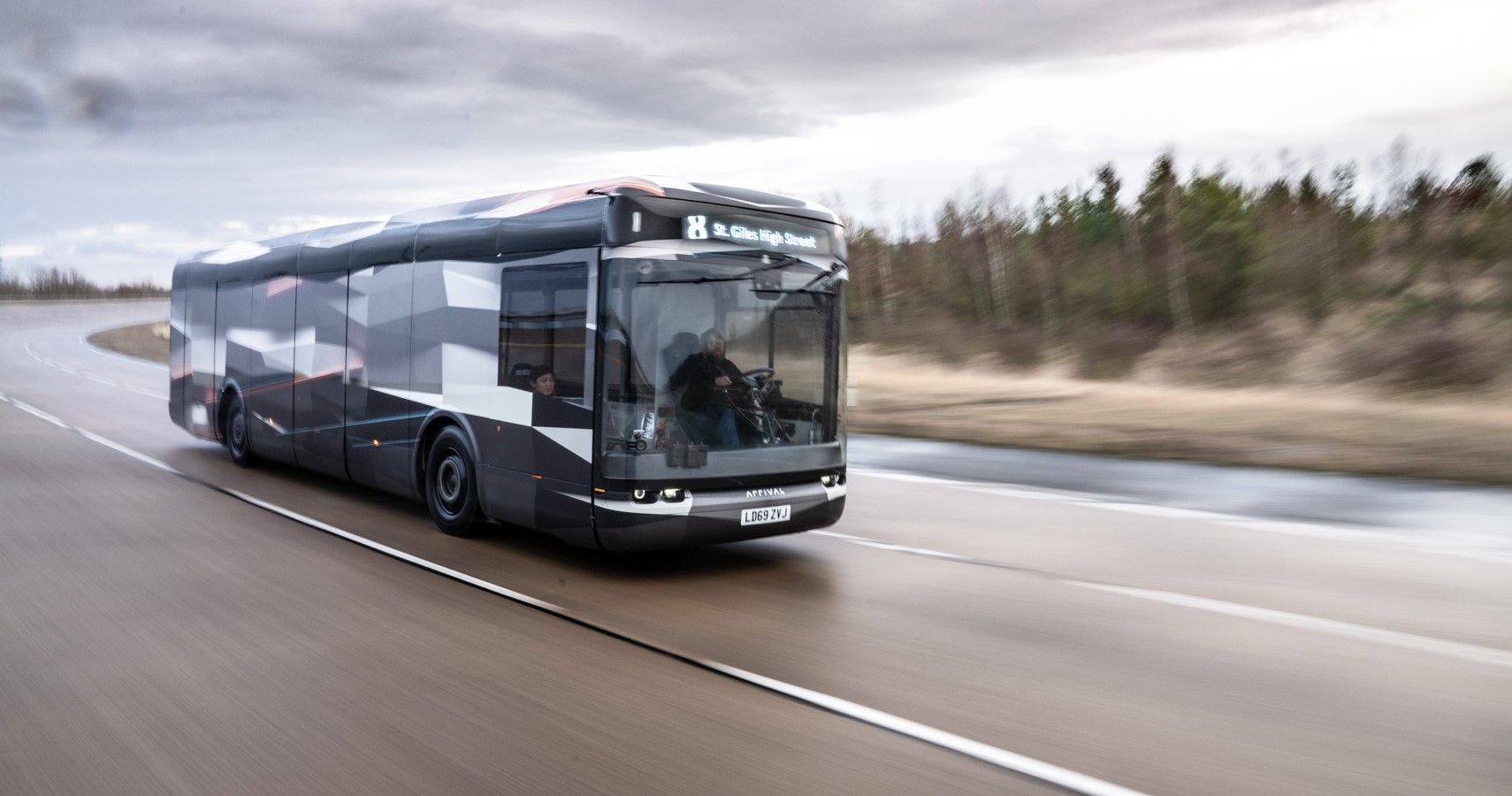Electrification is now inevitable and it is just a matter of years when the public roads will go silent! And for that to happen, the hauling industry should also pitch into the EV revolution. The commercial sector will be one of the most challenging areas when it comes to the EV shift. This is a sector that can't go number even for a second, as a lot of industries depend on them. Also is the case when it comes to public transport. Buses are a crucial aspect of inter-city and cross-country transportation.
But certain EV start-ups are challenging a shift in this deep-rooted sector that has long been dependent on diesel powerplants. Arrival is one such EV manufacturer based in the UK, and they have a pretty cool bus at their disposal! Well, by the looks of it, the Arrival electric bus looks ordinary, flaunting the same old boxy design. But the palette of LED lighting all over the top on the outside gives you an idea of how 'bright' the idea actually is.
Jokes apart, the true potential of the electric bus lies in what it holds underneath and the method in which Arrival plans to attain dominance. The company literal is an outlaw, doing things in the exact opposite way as compared to how the EV giants like Tesla. Even established commercial bus makers like BYD (one of the leading Chinese giants in the auto industry) and Hyundai have a much tamer business model.
The Arrival electric bus is a fresh off-beat take on commercial transportation with lots and lots of LED screens everywhere.
Arrival Electric Bus Is A Cheaper Take On Commercial EVs; Thanks To Its Off-Beat Micro-Factory Setup
One key factor for Arrival to shoot up in terms of valuation and funding is its off-beat take on the establishment and production of EVs. This UK-based start-up takes the exact opposite route when compared to EV-leaders like Tesla. They are not investing in huge factories, but are keen on making numerous micro-factories spread across their demography.
These factories are small enough to fit into warehouse spaces. The upsides are plenty. This decentralized method helps source components locally (if available) which drops the price. Again, more factories mean lesser distance to transport the vehicles as opposed to a single factory. So, money-savings again! Arrival says that it can make 1,000 buses a year from one micro-factory and they plan
The most important aspect is lowered investments and more widespread possibilities of custom EVs according to each state or even city. So, when it comes to the commercial space, micro-factories help saves a fortune and also provide a lot of flexibility starting from production to delivery. With this take, the Arrival Electric bus is slated to be much cheaper than its competition and will be in the same vicinity as its deferring diesel counterparts.
Made Of A Durable Material That Doesn't Need Repair
If you have ever been on public transport, then it will come as no surprise that hits and bruises are common (on the vehicle, of course!). It is not quite easy to maneuver buses on tight urban roads. And so, Arrival had thought of it and came up with their very own patented composite material that requires minimal maintenance. The bus's exterior panels are made from thermoplastic-composite panels that make it much durable and dent-proof as opposed to metal sheets. Another advantage is that it's lighter which adds up to the performance and range of the bus, which is quite crucial.
Built On A Modular Platform; The Arrival Bus Is Flexible
Not much information is out regarding this, but Arrival makes all of its products from scratch. And they have opted for a modular platform for their EVs. Well, it sure is outrageous to say that the Arrival Electric van and Electric bus share the same roots, but we expect Arrival to slowly expand to trucks as well. The frame is made of aluminum and thus makes the bus lighter and more rigid.
Minimalism And Technology Gives The Cabin An Easy Approach
There is just one door for entry and exit and is located at the front. It can seat anywhere from 80-125 passengers and the cabin space is spread on a flat floor layout for greater usability of space. The 'cantilever floating seats help for easy seating and cleaning of the floor.
In its most spacious layout, the Arrival bus can seat 36 passengers. Above, you get a beautiful panoramic glass roof that is ringed along the length with LED screens that can showcase various info ranging from route map to weather, to quirky details about the places you pass by on the journey.
A Generic Bus Shape; But LEDs All The Way
It is not the inside alone that is adorned with LED displays. The apparently boring form factor gets a bright chin-up job with a halo of LED displays on the top quarter of the bus. Advertising is the main goal we presume, as it is a very easy method to gain revenue. Apart from that, the mostly glass layout has a minimal approach with easy viewing angles for the driver and passengers.
Range And Payload Capabilities Of The Arrival Bus Are Promising
For an EV of this size, range anxiety comes free. But Arrival has taken things sensibly and utilized its lightweight construction for an efficient powertrain layout. It comes with a maximum battery capacity of 310.8 kWh that is expected to give a range of 124-254 miles while providing a maximum payload of close to 18,000 pounds. The public testing is underway, and expect the Arrival bus to be on the roads in 2022.
Sources: Theverge.com, Greencarreports.com, Electrek.co, Observer.com

